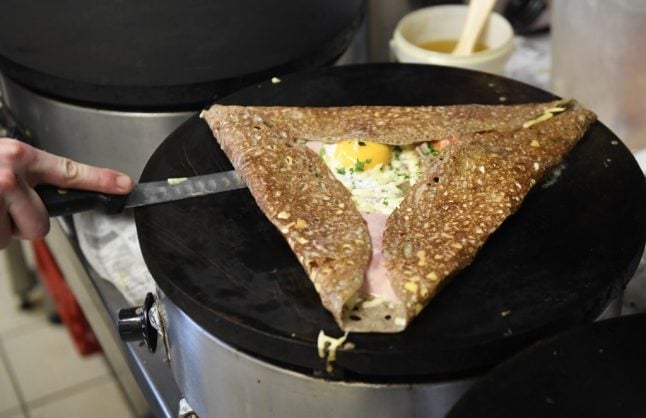We asked The Local's readers whether they prefer a galette – a pancake made with wholewheat or buckwheat flour and generally served with a savory filling – or a crêpe, which is made with plain flour and usually served as a desert with a sweet filling like jam, lemon and sugar or Nutella.
Of course many people went for the best option – both – but when forced to choose it was a very narrow victory for galette with 51 percent of the vote.
Megan Briana said simply: “Galette for savory and crepe for sweet.”
Of those who did pick one, many shared their favourite serving suggestions, like Elizabeth Winckell who enjoys her galette with tomatoes and mushrooms, while others plumped for the classic ham and cheese.
Of the readers with a sweet tooth, Li Ly likes her crêpe with banana and chocolate syrup while Rudy Wolff said: “A crêpe with sugary lemon butter enjoyed at Madame de Pompadour's château Champs sur Marne is still not forgotten.”
Both types of pancake are knows as Breton specialties, but within Brittany itself there is some debate over that they are called.
The departments of Côtes-d'Armor and Ille-et-Villaine, in northern and east Brittany, generally differentiate between a crêpe (a thin, sugared wheat flour pancake) and a galette, or galette sarrasin (a thicker savoury pancake made with buckwheat, water and salt).
Whereas in the departments Morbihan and Finistère, in south and west Brittany, all types are called crêpes.
The thin, sweet, wheat flour version is called a crêpe froment, bretonne or sucré (wheat, Breton or sugary) and the savoury buckwheat kind is called a crêpe blé noir or sarrasin (buckwheat or sarrasin, a similar type of flour).
In southern Brittany, asking for a galette may leave you disappointed as the word is used for thicker, blini type pancakes.
But there's only one of them that has it's own special day – February 2, known as La Chandeleur in France, is a religious holiday that now largely revolves around crêpe eating.
The day marks the date Jesus was presented at the temple in Jerusalem.
Not an obvious link with crêpe you might think, but before it became part of the Christian calendar it was a pagan festival that celebrated the return of the sun by cooking a round (sun-shaped) crêpe.
These days most French people don't really pay much attention to the religious holiday, by having pancakes for dinner is a big part of the day.
La Chandaleur also comes with an impressive list of superstitions that include putting a crêpe in a wardrobe and foretelling death through the weather.
It seems they're all pancaked out after that though, as crêpe don't really feature in Shrove Tuesday in France, as they do in many places around the world.



 Please whitelist us to continue reading.
Please whitelist us to continue reading.
Member comments